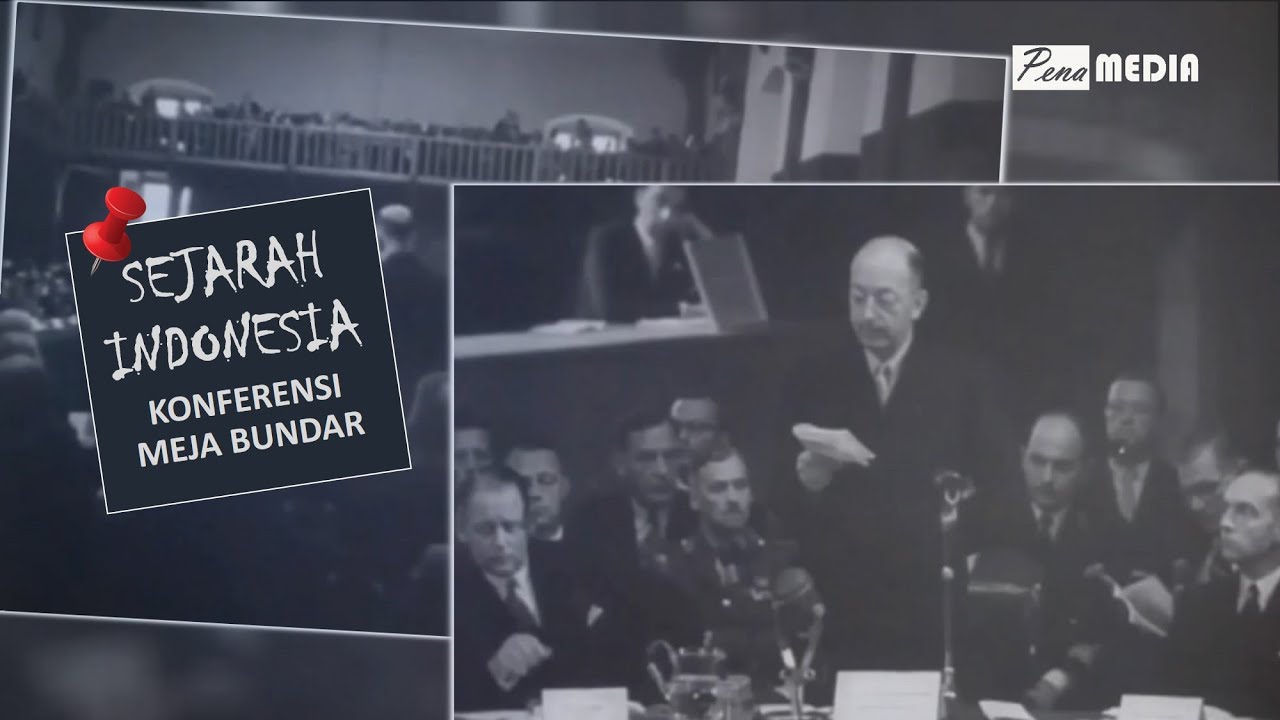Perjanjian Renville - Latar Belakang, Proses, Isi, dan Dampaknya
Summary
TLDRThe video discusses Indonesia's struggle for independence, focusing on the Renville Agreement of 1948, which was intended to resolve tensions between Indonesia and the Netherlands. Despite initial hopes for peace, the agreement primarily upheld Dutch sovereignty over much of Indonesia, leading to continued conflict and guerrilla resistance from Indonesian forces. Key figures and events are highlighted, illustrating the international attention on the conflict and the challenges faced by Indonesia in achieving true independence. Ultimately, the Renville Agreement exemplifies the complexities of colonial struggles and the resilience of the Indonesian people in their fight for sovereignty.
Takeaways
- 😀 Productivity can be significantly improved by utilizing various tools such as notebooks, calendars, and to-do lists.
- 😀 Establishing a personal productivity system helps in managing both personal and work life efficiently.
- 😀 Regularly reviewing and adjusting productivity techniques is essential for continued effectiveness.
- 😀 Attention management, rather than just time management, plays a crucial role in enhancing productivity.
- 😀 Incorporating mindfulness practices can help in maintaining focus and reducing distractions.
- 😀 Setting clear goals and breaking them down into actionable steps is vital for achieving success.
- 😀 Learning from past experiences and mistakes can lead to better decision-making and improved future outcomes.
- 😀 Collaboration and communication within teams are key factors in optimizing productivity.
- 😀 Emphasizing work-life balance contributes to overall well-being and sustainable productivity levels.
- 😀 Continuous learning and adaptation to new tools and strategies are necessary for personal growth.
Q & A
What was the primary challenge Indonesia faced after achieving independence?
-After achieving independence, Indonesia faced the challenge of attempts by the Netherlands to regain control, employing various tactics including military aggression and diplomatic pressure.
What was the significance of the Renville Agreement?
-The Renville Agreement was significant as it aimed to establish a ceasefire between Indonesia and the Netherlands, despite the ongoing conflicts and the Dutch's continued violation of the agreement.
Who were the key figures involved in the Renville negotiations?
-Key figures in the Renville negotiations included Amir Syarifuddin as the head of the Indonesian delegation, along with other representatives such as Dr. J. Leimena and Haji Agus Salim. The Dutch delegation was led by Colonel Raden Takdir Widjojoatmodjo.
What were the main points of the Renville Agreement?
-The main points included a ceasefire, recognition of Dutch sovereignty over Indonesia until a federal government was formed, and the demarcation of territorial lines, limiting Indonesian sovereignty to specific regions.
How did the Indonesian military respond to the Renville Agreement?
-The Indonesian military had mixed responses; while some factions adhered to the agreement, others, such as the Laskar groups, continued armed resistance against Dutch forces.
What role did the United Nations play in the Indonesia-Netherlands conflict?
-The United Nations facilitated peace efforts by issuing resolutions calling for ceasefires and mediating negotiations, eventually leading to the establishment of a three-nation commission to oversee the situation.
What was the impact of the Renville Agreement on Indonesian territory?
-The Renville Agreement resulted in Indonesia losing significant territories, leaving it with only parts of Java and Sumatra, while the Dutch maintained control over major food-producing areas.
What actions did the Indonesian government take after the Renville Agreement?
-Following the Renville Agreement, the Indonesian government established a temporary government in Sumatra and organized guerrilla warfare under military leaders to continue resistance against the Dutch.
What were the consequences of the Dutch military aggression following the Renville Agreement?
-The Dutch military aggression led to international condemnation and increased sympathy for the Indonesian cause, prompting further negotiations and ultimately contributing to Indonesia's eventual recognition as an independent nation.
How did the historical context of the Renville Agreement shape Indonesian nationalism?
-The Renville Agreement, along with subsequent conflicts, reinforced Indonesian nationalism as it demonstrated the people's resilience against foreign domination and solidified their resolve to fight for complete independence.
Outlines

Этот раздел доступен только подписчикам платных тарифов. Пожалуйста, перейдите на платный тариф для доступа.
Перейти на платный тарифMindmap

Этот раздел доступен только подписчикам платных тарифов. Пожалуйста, перейдите на платный тариф для доступа.
Перейти на платный тарифKeywords

Этот раздел доступен только подписчикам платных тарифов. Пожалуйста, перейдите на платный тариф для доступа.
Перейти на платный тарифHighlights

Этот раздел доступен только подписчикам платных тарифов. Пожалуйста, перейдите на платный тариф для доступа.
Перейти на платный тарифTranscripts

Этот раздел доступен только подписчикам платных тарифов. Пожалуйста, перейдите на платный тариф для доступа.
Перейти на платный тарифПосмотреть больше похожих видео

SEJARAH PERJANJIAN RENVILLE - LATAR BELAKANG PERJANJIAN RENVILLE, ISI DAN DAMPAK

MATERI TWK CPNS 2021 Perundingan Internasional pasca kemerdekaan

Sejarah Konferensi Meja Bundar

ROUND TABLE CONFERENCE (KMB): BACKGROUND, CONTENT AND FIGURES INVOLVED

PERUNDINGAN HOOGE VELUWE

Materi Konferensi Meja Bundar / Sejarah Indonesia
5.0 / 5 (0 votes)
